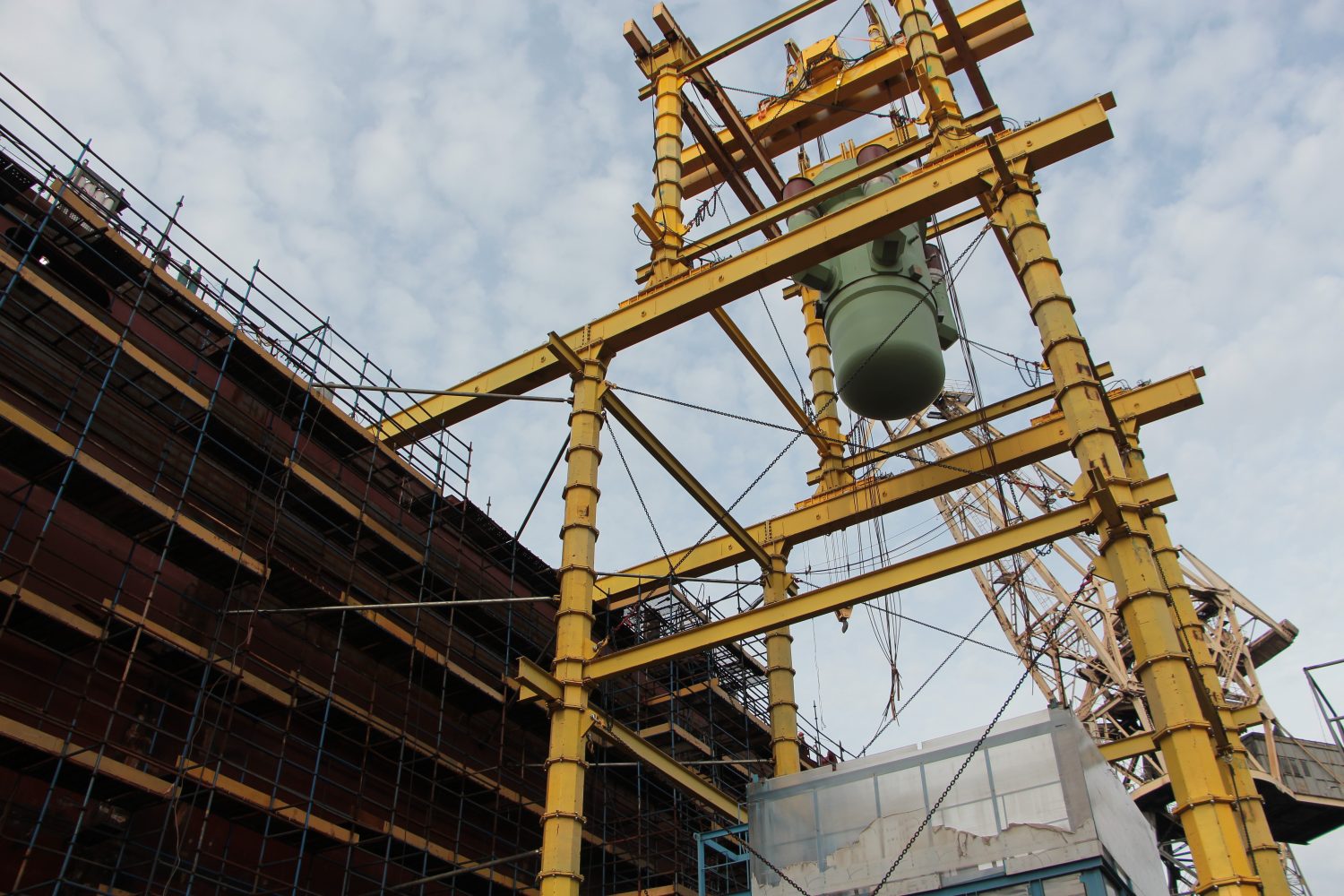
On the Northern Sea Route
back to contentsThe employees of the Baltic Shipyard and Spetstyazhavtotrans, a Russian carrier of oversized cargo, performed the loading of the reactors onto the second Project 22220 nuclear icebreaker Ural. It was the first time slipways were used to load reactors onto a ship. Before that, both loading and installation were performed afloat at the fitting-out quay with the help of a crane vessel.
Prior to the loading, Baltic Shipyard engineers designed special fixtures and accessories to synchronize the loading process and maintain the required slope angle to within a distance below1 mm. A modular gantry crane was used to lift and lower heavyweight and oversized equipment. This approach allows for easier, faster and more cost-efficient loading, installation and fitting out.
RITM-200 is an innovative reactor developed by OKBM Afrikantov (Rosatom’s mechanical engineering division subsidiary) specifically for icebreakers. The Ural icebreaker will be equipped with two reactors of this type, each with the capacity of 175 MW. RITM-200 is unparalleled for its compact size and cost effectiveness. Its energy-efficient integrated design allows for core equipment to be placed inside the steam generator shell.
The same reactors are installed on Arktika and Sibir (Siberia) both of them already afloat. Together with the Ural, the three icebreakers will replace Soviet-era nuclear powered vessels Yamal, Taymyr and Vaygach.
Arktika, Sibir and Ural icebreakers will become the world’s largest and most powerful nuclear icebreakers. When they are put into operation, Atomflot (Russia’s nuclear icebreaker fleet owner and operator) will be able to arrange for year-round navigation along the entire Northern Sea Route. Thanks to unparalleled technical specifications, the icebreakers will be capable of breaking three-meter-thick ice and able to operate in the Arctic Ocean and estuaries of Siberian rivers.
Not long ago, Atomflot’s acting Director General Mustafa Kashka announced at the 7th Murmansk International Business Week that the decision to build the fourth and fifth nuclear icebreakers would be made before the end of the year.




